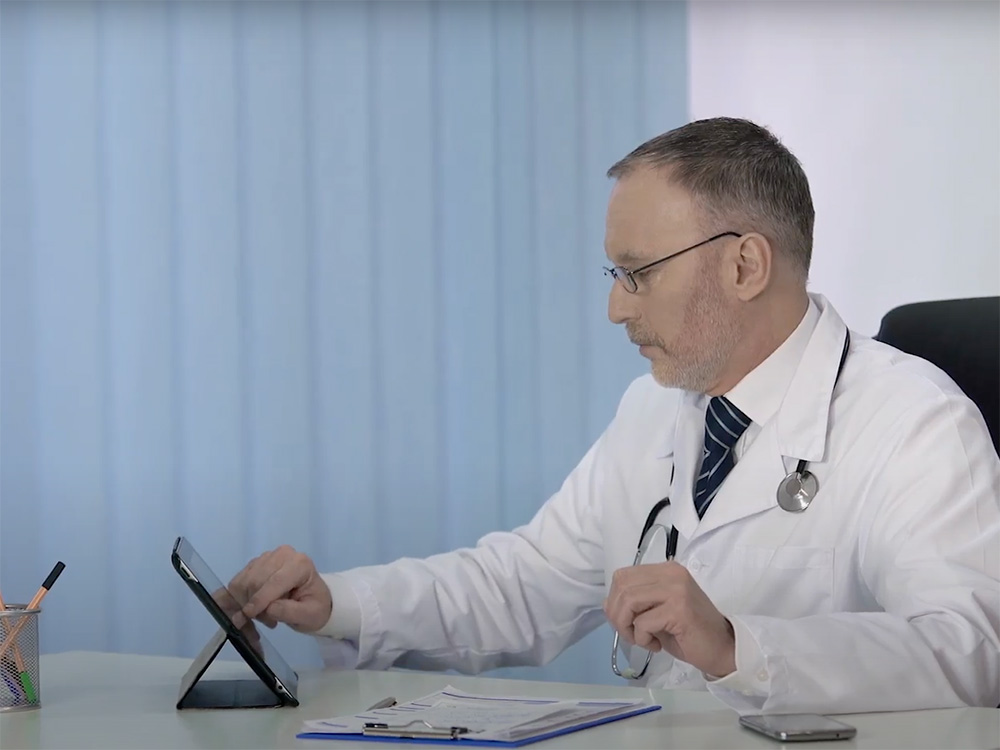Selecting The Ideal Document Management Software For Healthcare Institutions
In the fast-paced world of healthcare, where patient records, research data, and administrative documents are generated daily, how do you ensure that everything is organized and easily accessible? The challenge of managing vast amounts of medical documents is one that many healthcare institutions grapple with.
In this article, we’ll walk you through the essentials of selecting the most suitable document management software for your healthcare institution. By the end, you’ll possess the insights needed to make a decision that could profoundly enhance your institution’s operational efficiency and patient care quality.

Grasping the Essence of Medical Document Management Software
Document management software, in the context of healthcare, is a digital platform designed to assist medical institutions in organizing, storing, and retrieving electronic documents efficiently. Think of it as a modern-day, virtual medical records room.
Transitioning to such a system not only propels healthcare institutions towards a more streamlined, paperless environment but also enhances patient care by ensuring that vital information is always at hand. With the right file management software for documents, healthcare professionals can swiftly access patient records, research data, and administrative documents, ensuring timely and informed decisions.
Moreover, in an industry where every second counts, having a reliable system to manage documents can be the difference between life and death. It minimizes the time spent searching for crucial patient information and reduces the chances of misplacing or losing vital records.
A Comprehensive Guide to Selecting Medical Document Management Software
1. Dive Deep into Market Analysis
Before venturing into the realm of document control software for healthcare, it’s imperative to immerse yourself in comprehensive market analysis. This exploration will illuminate the pivotal features that are essential for medical institutions, such as secure patient record storage, integrated collaboration tools, mobile accessibility, and stringent data protection measures.
Recognizing industry frontrunners and critically evaluating your choices will lay a robust foundation for pinpointing the document management software that aligns seamlessly with your institution’s needs.
2. Pinpoint Your Institution’s Requirements
Every healthcare institution has its unique set of challenges and needs when it comes to document management. Perhaps you’re in search of a digital repository for patient records that require periodic updates, or maybe you need a platform that facilitates the daily generation and modification of research documents.
It’s also worth considering whether an on-premises solution or a cloud-based document management software, overseen by a vendor or third-party, aligns best with your institution’s infrastructure and security protocols.
The ideal software should be intuitive and scalable and align with the technical proficiency of your staff. It should empower them to store, retrieve, and share documents effortlessly, even on mobile devices. For institutions operating within stringent regulatory frameworks, features such as advanced security measures, access controls, and document version tracking become paramount.
3. Thoroughly Evaluate Your Options and Seek Feedback
Once you’ve identified what you expect from medical document management software, it’s time to delve deeper into your options. Engage with potential software providers and pose questions such as:
- Which operating systems are compatible with this software?
- Does the software include features for medical imaging and digitization?
- Are there tools for team collaboration, workflow automation, or patient management?
- How many file formats does the software support?
- Can multiple healthcare professionals access a patient’s record simultaneously?
- Which third-party applications can integrate with this document management system?
Furthermore, perusing reviews from other healthcare institutions can offer invaluable insights into the strengths and potential pitfalls of each document management software. This step provides a comprehensive understanding of a software’s real-world performance and user satisfaction.
4. Document Every Detail
When you’ve zeroed in on your preferred software and are poised to finalize the agreement, it’s crucial to meticulously review any contractual documents. Ensure that all discussed features, terms, and costs are explicitly outlined.
Moreover, it’s essential to have a transparent exit strategy in your agreement, safeguarding you from exorbitant termination fees or unforeseen complications.
5. Periodically Review Software Efficacy
After implementing your chosen document management software, it’s vital to periodically assess its performance in your healthcare setting. This involves uploading and organizing medical documents, granting access to various staff members, and evaluating the software’s security features.
Should you encounter any challenges, promptly communicate with the software provider. If they’re unable or unwilling to address these concerns, it might be time to reconsider your choice.

How To Choose The Best Document Management Software For Healthcare Institutions
Alignment with Healthcare Benefits
When selecting file management software for a healthcare setting, it’s essential to ensure that the software aligns with the specific benefits you aim to achieve. The software should not only address immediate challenges, such as patient record management, but also pave the way for long-term enhancements, like research data organization.
For instance, if the primary goal is to enhance patient care efficiency, the file management software should be equipped with features that expedite medical record retrieval and streamline administrative tasks.
Identifying Your Institution’s Needs
Volume and Nature of Medical Documents
The initial step in pinpointing the ideal medical document management software is to gauge the volume and type of documents your healthcare institution manages. This assessment will guide you in determining the storage capacity and access features you require.
For example, a large hospital dealing with a vast number of patient records and research data would necessitate software with robust storage capabilities. Conversely, institutions handling sensitive patient information would prioritize advanced security features.
Number of Users and Security Protocols
The number of healthcare professionals and administrative staff who will utilize the software, coupled with the security measures required, are pivotal factors in your decision-making process.
If your institution boasts a large team, the optimal document management software should accommodate numerous users simultaneously without compromising on performance or security. Moreover, in the sensitive realm of patient data, the software must offer robust security features, ensuring that confidential information remains shielded from unauthorized access.

Evaluating Core Software Capabilities
Efficient Search and Access Mechanisms
Select a document control software that boasts powerful search functionalities and access controls. This ensures that medical records and other essential documents are not only secure but also swiftly accessible. For instance, healthcare professionals should be able to pinpoint patient records using specific keywords or criteria, and the software should facilitate granular control over who can access and modify these records.
Mobile Access and Integration
In the digital age, having mobile access to medical documents is indispensable. The software should provide mobile access, enabling healthcare professionals to retrieve patient records from anywhere, anytime. Additionally, it should integrate seamlessly with other software applications used in healthcare settings, such as Electronic Health Record (EHR) systems, to enhance patient care and administrative workflows.
Scalability and Customization
As your healthcare institution grows and evolves, so will your medical document management software needs. Therefore, it’s crucial to select software that’s scalable and can adapt to these changing requirements. The software should also offer customization options, allowing institutions to tailor workflows or add specific fields to documents based on their unique needs.
Considering the Software Provider
Reputation and Customer Service
The reputation of the software provider and the quality of their customer service are crucial factors to consider. A reputable provider is more likely to offer high-quality software tailored for healthcare needs. Additionally, responsive customer service is essential for smooth operation, timely updates, and troubleshooting.
Training and Support
Introducing new software in a healthcare setting can be challenging, especially if the staff is not familiar with the latest technological advancements. The provider should offer comprehensive training and support, ensuring that healthcare professionals can maximize the benefits of the software. This support might encompass onboarding sessions, detailed user manuals, and ongoing technical assistance.
Ensuring Security and Compliance
Security Features
In the digital age, safeguarding patient data is paramount. The chosen document management software should be equipped with impenetrable security features, including user permissions, access controls, audit trails, and encryption. This ensures that sensitive patient information is protected from potential breaches or unauthorized access.
Compliance Assistance
Healthcare institutions operate under specific regulations, such as HIPAA. The file management software should assist institutions in adhering to these regulations, offering features like automated workflows, document retention policies, and detailed audit trails.
Opting for User-Friendly and Preconfigured Solutions
User-Friendliness
For a document management system to be effective in a healthcare setting, it needs to be user-friendly. A complex or unintuitive system could deter staff from using it, negating its potential benefits. It’s essential to choose software that’s intuitive, ensuring rapid adoption and efficient use across the institution.
Preconfigured Solutions
Opting for preconfigured solutions can significantly reduce the implementation time, allowing healthcare institutions to quickly transition to a more organized and efficient document management system. These solutions, based on industry best practices, can be easily adapted to specific institutional requirements, ensuring a smooth transition and immediate benefits.

Must-Have Features for Medical Document Management Software
Innovation in Healthcare Document Management
In the rapidly evolving world of healthcare technology, it’s essential for file management software to stay ahead of the curve. The software should be equipped to handle intricate medical processes while maintaining an intuitive user experience. As technology advances, it’s crucial that the software adapts, ensuring it remains relevant and continues to meet the needs of healthcare professionals.
Architectural Flexibility
The chosen document management software should be designed to meet both the current and future needs of your healthcare institution. This flexibility ensures that as your institution’s requirements evolve, the software can adapt without necessitating a complete overhaul. Whether it’s integrating with new medical technologies or expanding storage capabilities, the software’s architecture should be future-proof.
Strong Security Measures
Given the sensitive nature of medical records, security is paramount. A top-tier document control software will have a comprehensive rights system, ensuring that documents are accessible only to authorized personnel. This not only protects patient data but also ensures that healthcare professionals can access the information they need without compromising patient confidentiality.
Scalability for Growing Institutions
As healthcare institutions expand, so do their document management needs. The ideal document management software should be able to scale with your institution, accommodating an increasing volume of records without sacrificing performance or security.
Seamless Integration Capabilities
In a healthcare setting, multiple software systems often operate simultaneously, from patient management systems to billing software. Your file management software should seamlessly integrate with these existing systems, ensuring a smooth flow of information and enhancing overall operational efficiency.
Remote and Mobile Access for On-the-Go Professionals
Healthcare professionals often need to access patient records and other essential documents while on the move. Whether they’re visiting patients at home or consulting with colleagues at another location, having mobile access to the document management software is crucial. This feature ensures that professionals can provide timely care and make informed decisions, regardless of their location.

Elevate Your Healthcare Practice with the Right Medical Document Management Software
The Power of Quadient Impress Software in Healthcare
In the intricate landscape of healthcare, managing documents efficiently is paramount. At Lineage, we recognize the unique challenges healthcare institutions face in document management. That’s why we offer Impress, a document management and customer communications enterprise software solution for the healthcare sector, brought to you by Quadient.
Quadient Impress stands out as an intelligent solution designed to eliminate manual processing and repetitive tasks. By automating these processes, the software minimizes human error, enhancing both patient care and administrative efficiency.

Why Quadient Impress?
This document management software is not just about storing and retrieving medical records. It’s about revolutionizing the way healthcare institutions operate. Here’s how:
- Timely Patient Communication: Whether it’s test results, appointment reminders, or billing information, the software ensures that communications are dispatched promptly in both digital and physical formats.
- Enhanced Data Security: With the increasing threats to digital data, Quadient Impress prioritizes the security of patient information, ensuring that sensitive data remains protected at all times.
- Streamlined Operations: Say goodbye to the manual sorting of documents and the constant worry about using the correct mailing materials. This software automates these tasks, allowing healthcare professionals to focus on what they do best: providing care.
- Regulatory Compliance: In the healthcare sector, adhering to regulations is not just about best practice; it’s a necessity. Quadient Impress ensures that institutions remain compliant, be it with HIPAA or other relevant mandates.
Experience the Lineage Difference
Choosing the right file management software can be transformative, offering a blend of efficiency, security, and compliance. If you’re keen to explore how Impress can redefine your healthcare institution’s document management processes, reach out to us. At Lineage, we’re always ready to guide you toward operational excellence.
Elevate Healthcare With Lineage’s Document Management Expertise
In today’s dynamic healthcare environment, the right tools can make all the difference. Adopting top-tier document management software can significantly enhance efficiency, security, and patient communication for your institution.
At Lineage, we champion the transformative potential of advanced document management. If you’re poised to elevate your healthcare operations and harness the benefits of state-of-the-art software, Lineage stands ready to guide your journey to excellence.
